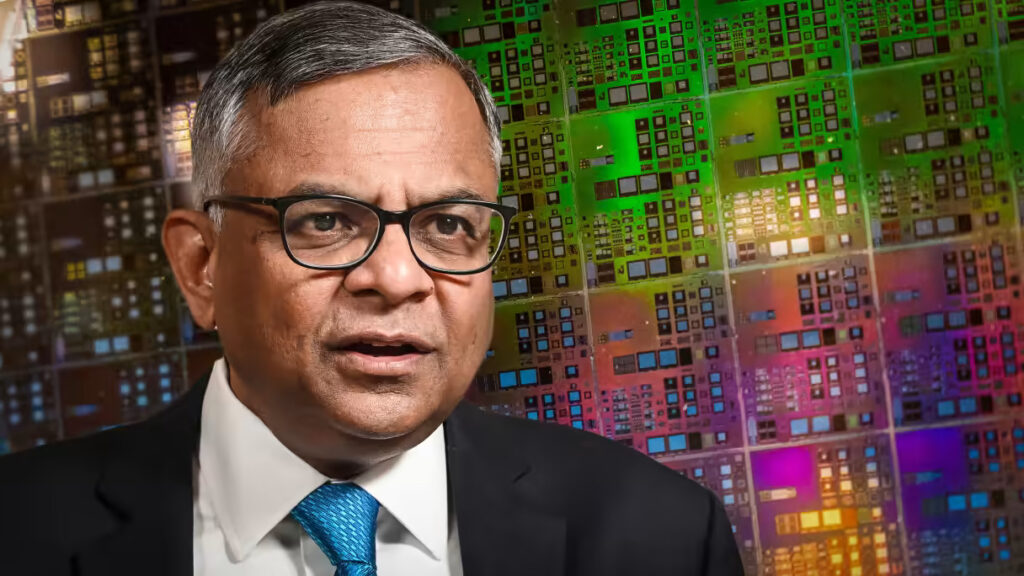India’s Tata Group will start generating semiconductors withinside the country inside some years, a flow that the chairman of the institution’s essential organization stated will make the South Asian country a key a part of worldwide chip supply chains.
In an interview with Nikkei Asia in Tokyo on Thursday, Tata Sons Chairman Natarajan Chandrasekaran discovered that the conglomerate plans to release new agencies in rising fields consisting of electric powered motors.
“We have created Tata Electronics, beneathneath which we’re going to installation a semiconductor meeting trying out commercial enterprise,” Chandrasekaran stated, regarding an electronic components producer that the institution based in 2020.
“We could have discussions with more than one players,” the chairman added, elevating the opportunity of partnerships with present chip producers. Launching a chipmaking commercial enterprise on its very own is a mission for an green organization.
Semiconductor producers and foundries withinside the U.S., Japan, Taiwan and South Korea are visible as capability partners. Tata already introduced a semiconductor layout and improvement partnership with Renesas Electronics in June.
Chandrasekaran additionally stated Tata will “look at the opportunity of sooner or later launching an upstream chip fabrication platform.” The upstream method of wafer fabrication is greater tough each technologically and financially than the downstream steps of meeting and trying out.
Tata’s flow into chipmaking will wreck new floor for India, wherein the semiconductor marketplace is about to greater than double among 2021 and 2026 to $64 billion, in step with the India Electronics and Semiconductor Association and others. The country now has without a doubt no semiconductor enterprise, apart from software-primarily based totally layout, despite the fact that call for for semiconductor-in depth merchandise consisting of smartphones and electric motors is developing rapidly.
Momentum is constructing to diversify chip deliver chains, that are at gift focused in East and Southeast Asia, following the worldwide chip scarcity and U.S.-China tensions. The ongoing U.S.-China “decoupling” in chip-associated generation is main foremost chipmakers to are trying to find greater different deliver-chain locations. Both Tata and the Indian authorities are trying to find to capitalize in this shift to put the country as a brand new semiconductor hub.
Chandrasekaran defined that his institution has been selling its “destiny ready” strategy, wherein present institution companies, from steel to arms, adapt to new demanding situations consisting of digitization and weather extrade even as additionally launching new agencies.
“If you have a take a observe the complete institution, there are in general 3 essential initiatives,” he stated. “The first one is to reinforce the center companies, 2nd is transition the core to the destiny [and] third is investment [in] destiny commercial enterprise.”
Elaborating on the second one point, he stated the transition involves “getting ready them for, wide variety one, the virtual world. Second is transition for the destiny electricity, sustainability. The third is transition towards resilience in deliver chains.”
As a part of that effort, the chairman discovered that the institution plans to invest $ninety billion over the following 5 years. In addition to semiconductors, the chairman stated the organization is withinside the method of beginning new agencies consisting of the producing of electrical motors and EV batteries, manufacturing of renewable electricity and improvement of “awesome apps” that permit customers to shop for items and offerings from groceries to monetary merchandise.
Venturing into chipmaking ought to advantage Tata’s core IT and car agencies, which rely closely on imported semiconductors. Securing a solid deliver has been a selected mission for the latter. Production and income in India’s car enterprise as an entire each slumped remaining 12 months amid the worldwide chip scarcity.
That will best grow to be a larger problem for Tata because it pivots to electric powered motors, which require greater semiconductors than their opposite numbers with inner combustion engines. Though Tata Motors’ percentage of India’s universal passenger-car marketplace stood at much less than 20% remaining financial 12 months, it debts for almost ninety% of EV income in that space.
“I count on with the aid of using 2027, EV income will go IC engine income,” quicker than Tata’s public prediction of 2030, Chandrasekaran stated.
He additionally stated the institution desires to unify the control of Air India — the countrywide flagship airline that it has offered lower back from the authorities — and Vistara and AirAsia India, that are additionally withinside the institution. However, he did now no longer say whether or not this supposed combining their brands, really mentioning that it changed into an problem “up for dialogue going forward.”











More Stories
Protecting Wealth in Uncertain Times: Defensive Diversification Approaches
Fake news sites outnumber US newspaper sites: Report
This is how US Fed rate cuts will impact Indian economy